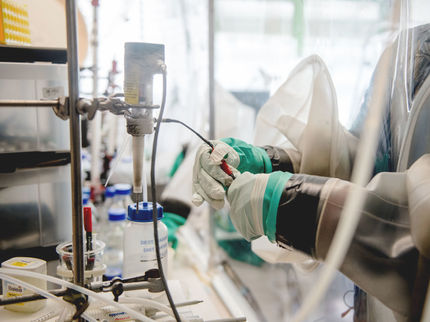Hydrogen conversion by the enzyme ‘Hydrogenase’
Advertisement
X-ray crystallography is still the method of choice to determine the atomic structure of large biological macromolecules. One of the major drawbacks of the method is that hydrogens are difficult to detect. However, hydrogens constitute about 50% of the atoms in proteins and are often involved in important interactions. Their detection, that requires a very high resolution, is of particular significance in enzymes where they directly participate in the reaction as for example in hydrogenases. Researcher of the MPI for Chemical Energy Conversion (MPI CEC) have now shown how preparations and single crystals can be consistently obtained with superb quality sufficient for sub-Ångström resolution leading to the detection of most of the hydrogens - even close to the metal ions. The new information available and prospects for protein crystallography are demonstrated for the case of a hydrogenase.
Hydrogenases are in the focus of energy research worldwide because of their interesting prospects in biotechnology and in serving as natural models for biomimetic catalysts in hydrogen production and conversion. To survey the hydrogenases it is mandatory to scrutinize the hydrogens in the crystal structure. Researchers at the MPI CEC were able to obtain an ultra-high resolution crystal structure so that the presented structural data of a [NiFe]-hydrogenase provides an extraordinarily detailed picture of the enzyme poised in a specific catalytic state that has not yet been described but is of central importance in the enzymatic cycle. The data include the positions of many hydrogens, e.g. the exact location of the hydride and the proton resulting from the initial heterolytic splitting of dihydrogen by the enzyme clarifying this crucial mechanistic step. This direct detection of the products of the conversion of dihydrogen is one of the very interesting and important results of this paper.
To obtain the ultra-high resolution crystal structure the scientists have isolated, purified and crystallized the [NiFe] hydrogenase from Desulfovibrio vulgaris Miyazaki F under strictly anaerobic conditions to avoid any inactivation or oxidative damage of the enzyme. Under an inert gas/hydrogen atmosphere a specific, essentially pure state (Ni-R) was obtained. They used a 3rd generation synchrotron (BESSY II, Berlin) to collect a high quality X-ray diffraction data set that was carefully analyzed.





















































